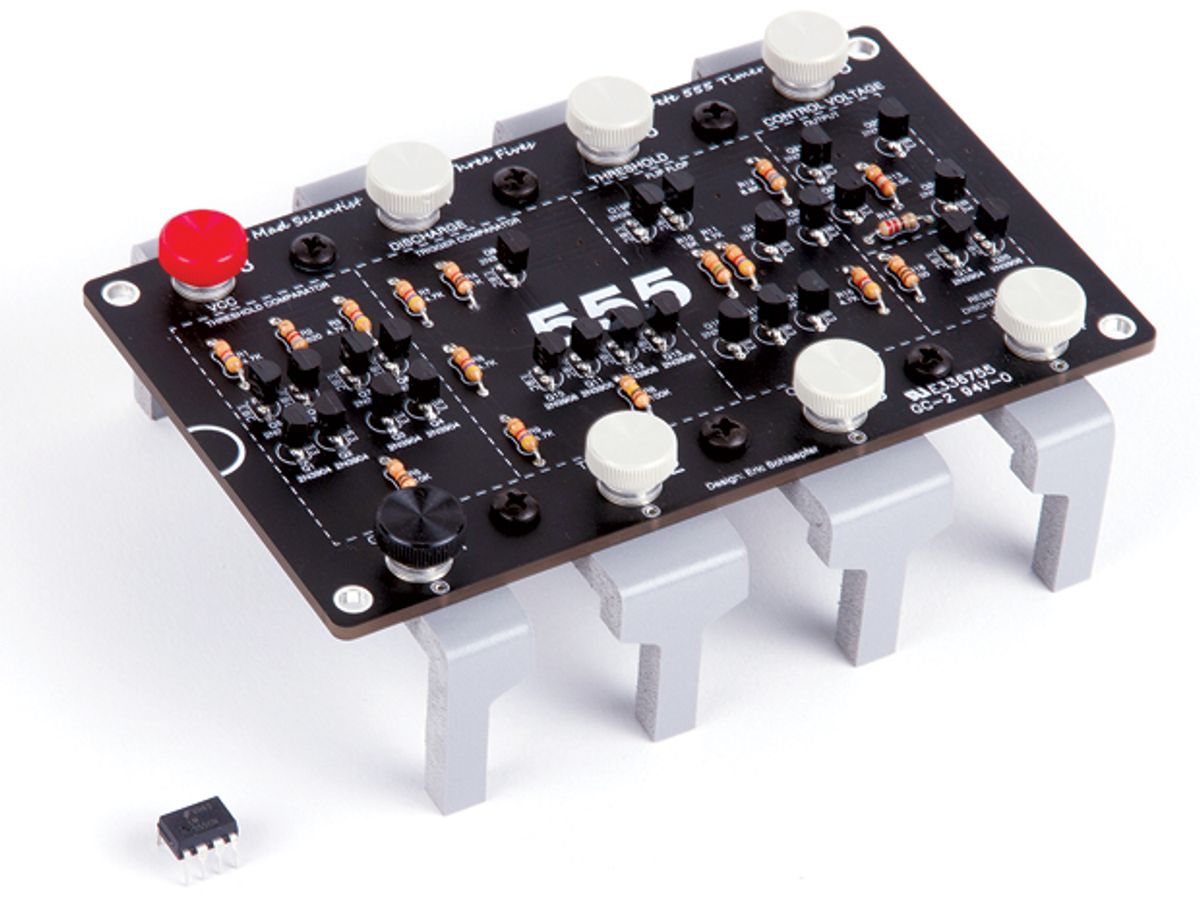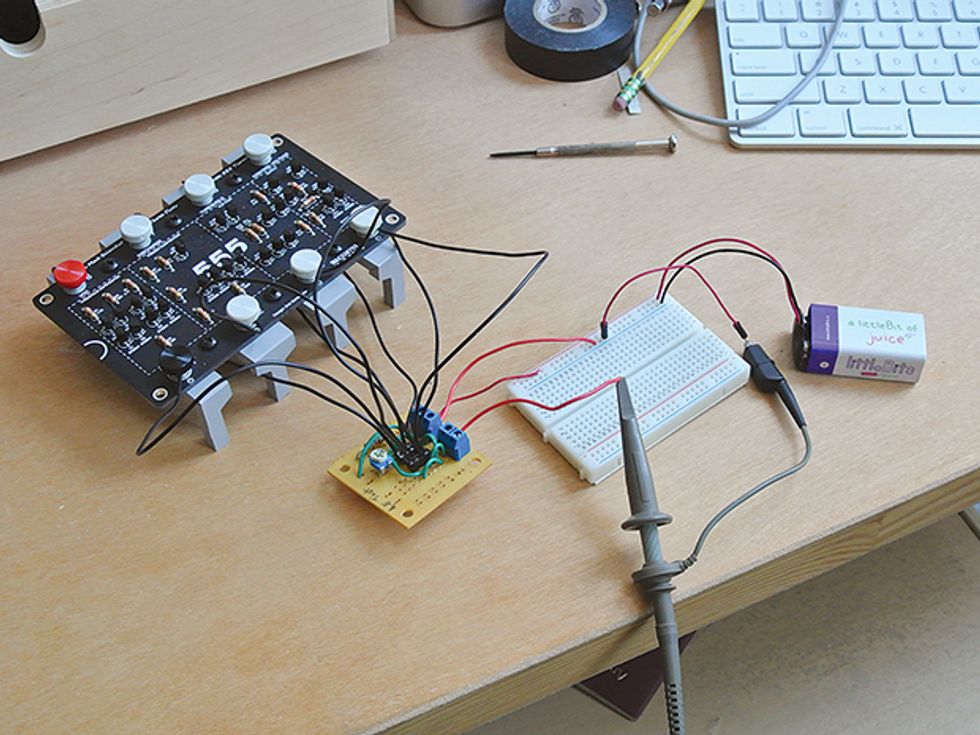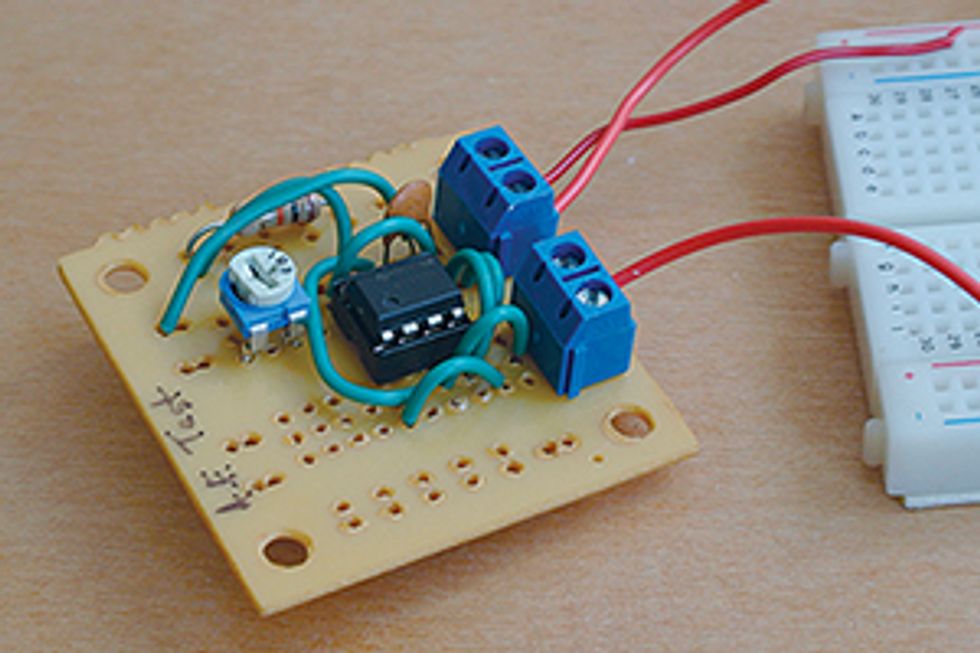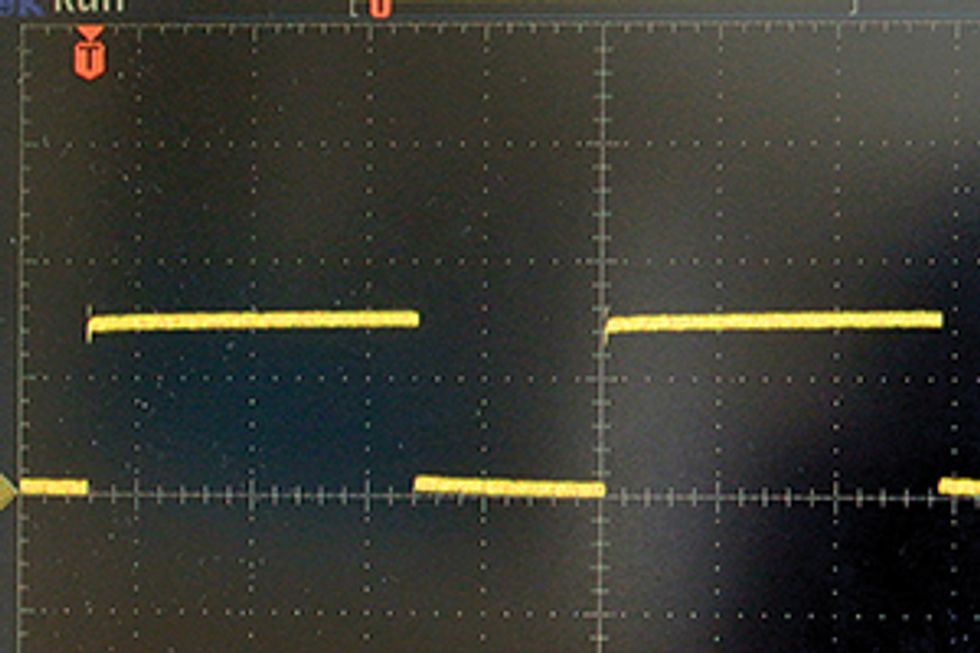Biologists have plastic DNA helices, astronomers have celestial globes, and chemists the ubiquitous periodic table wall chart. These iconic objects each encapsulate a foundational piece of working knowledge, recognizable to all practitioners in a field. Sadly, such touchstones are thin on the ground for electrical engineers. Although pretty, vacuum tubes, for example, are a niche technology these days, while the transistors and integrated circuits that define the discipline are a bit on the small side for easy viewing. So I was pleased when I learned about the recent creation of the US $35 Three Fives Discrete 555 Timer Kit, sold by Evil Mad Scientist, a DIY and open-source hardware company located in Silicon Valley.
The Three Fives kit is a working model of the 555 integrated circuit. It’s hard to think of an IC more ubiquitous than the 555 timer, which was introduced in 1971. There can’t be an electrical engineer alive today who hasn’t used a 555 at some point, for tasks ranging from simply making a light blink on and off to pulse-width modulation; in January’s Hands On article, our contributor used the 555 to make a music organ with conductive ink traces. Unlike many other chips that have come and gone over the decades, the 555 is still finding its way into all kinds of prototypes and products, with no end in sight (for the origins of the chip, see “25 Microchips That Shook the World,” IEEE Spectrum, May 2009). Just as DNA models, star maps, and periodic tables serve as reminders of fundamentals that can get obscured by day-to-day minutiae, so too the Three Fives kit is a reminder that even the most complex digital processor is still at its heart just a collection of very simple components.
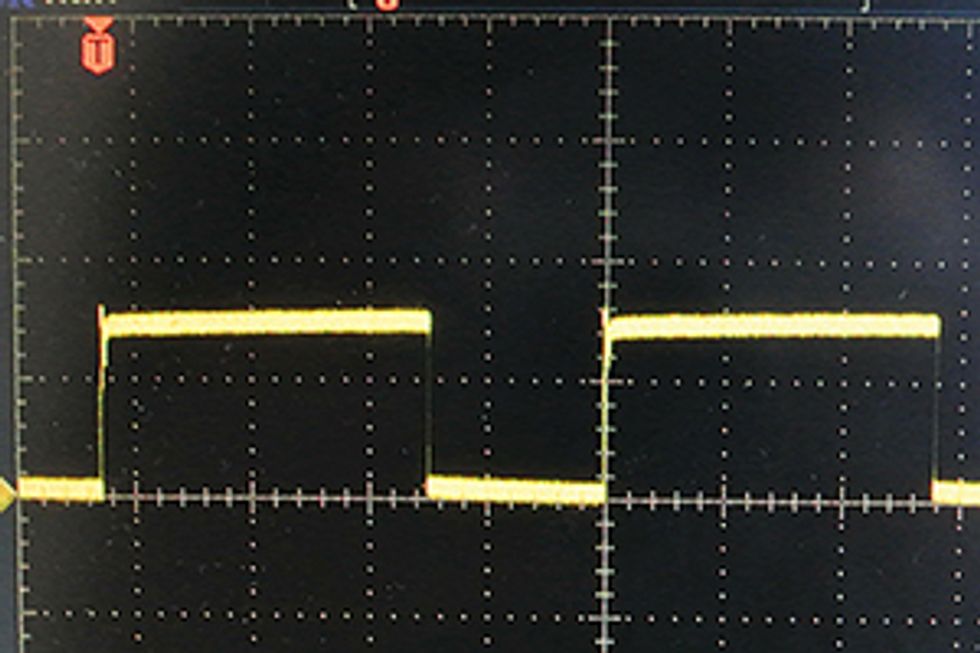
When assembled, the Three Fives stands 4.3 centimeters high, 9.9 cm wide, and 13.25 cm long, compared with the measurements of a typical 555 IC: 8.38 millimeters high, 7.87 mm wide, and 10.16 mm long. The legs that come with the kit are purely cosmetic, but not so the board that takes the place of the standard ceramic packaging. Much sturdier than a typical printed circuit board, this board doesn’t replicate the internals of a 555 IC in every detail. However, it’s divided into areas that do correspond to the functional blocks that make up an actual 555, such as the threshold comparator or the flip-flop that’s the cornerstone of the timer’s operation.
Populating the circuit board with its 26 transistors (split evenly between npn- and pnp-type) and 16 resistors is a straightforward bit of soldering. Threaded screws accommodate leads to connect the Three Fives kit to the rest of a circuit (there are also holes provided for soldering leads permanently to the board).
The kit is designed to be a “drop-in” replacement for the 555 chip in existing circuit designs, with the caveat that an extra resistor is needed for one pin in some circuits operating above 6.5 volts. After building the trial circuit suggested in the kit instructions—an LED blinker—I tested this drop-in idea with a small 9-V audio-frequency generator I’d built some time ago for troubleshooting circuits. Controlled via a variable resistor, the generator produces square waves between 5.5 and 7.3 kilohertz.
Using my oscilloscope, I measured the generator’s maximum and minimum output with its normal 555 chip, and then pried the chip out of its socket. With leads running from the Three Fives kit poked into the bare socket holes, I reran the measurements. The frequency of the output between the chip and the kit matched, as did the shape of the waveforms, albeit with a tiny bit more “ringing” with the kit when the waveform went from a low to a high state.
The 555 kit would be an excellent introduction for electronics beginners learning how to solder—detailed instructions and soldering tips are given in the accompanying leaflet—while introducing them to the basics of integrated circuit design and use.
It also offers opportunities for more advanced students, by exposing the internal components of what’s normally a black box (a complete circuit diagram is available on a data sheet you can download [PDF] from Evil Mad Scientist’s website). With an oscilloscope, you can probe each block of the timer as inputs such as the trigger, threshold, and control voltage are varied, demonstrating how they combine to produce various outputs. A useful class exercise might be finding component substitutions or augmentations to optimize this most general-purpose of circuits for specific tasks.
For myself, I hope this opens the door to more kit makers taking integrated circuits out of their black boxes and making them commercially available. The first microprocessor, the 4004, was built from 2300 transistors—no small soldering job, but surely doable over the course of a season.
Build This Giant Chipyoutu.be
This article originally appeared in print as “The Big Time.”
Stephen Cass is the special projects editor at IEEE Spectrum. He currently helms Spectrum's Hands On column, and is also responsible for interactive projects such as the Top Programming Languages app. He has a bachelor's degree in experimental physics from Trinity College Dublin.
